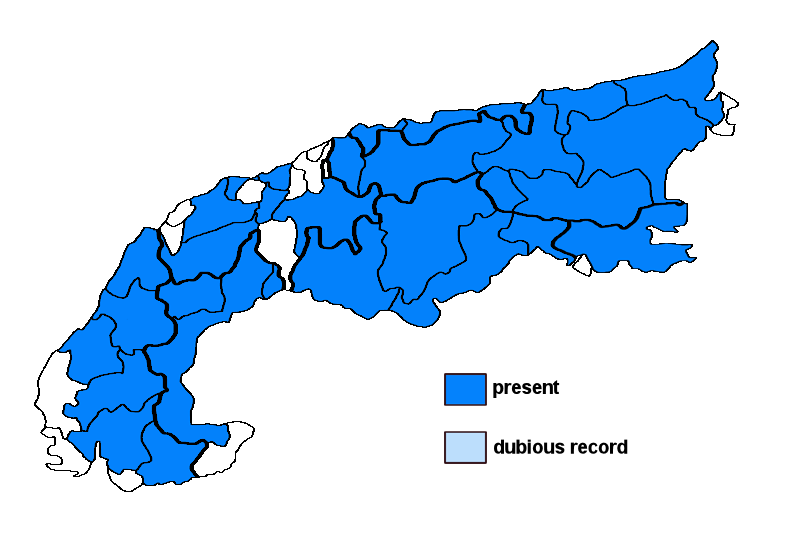Caloplaca ammiospila (Wahlenb. ex Ach.) H. Olivier
Syn.: Blastenia ammiospila (Wahlenb. ex Ach.) Arup, Søchting & Frödén, Blastenia ferruginea (Huds.) A. Massal. var. muscicola (Schaer.) A. Massal., Caloplaca cinnamomea (Th. Fr.) H. Olivier, Caloplaca discoidalis (Vain.) Lynge, Caloplaca ferruginea (Huds.) Th. Fr. var. ammiospila (Wahlenb. ex Ach.) Th. Fr., Caloplaca ferruginea (Huds.) Th. Fr. var. cinnamomea Th. Fr., Caloplaca ferruginea (Huds.) Th. Fr. var. muscicola auct., Caloplaca vacillans (Th. Fr.) H. Magn., Lecidea ammiospila Wahlenb. ex Ach.
Lichenised.
Substrate: plant debris, , calciferous soil
Altitudinal range: from the montane belt (potential vegetation: deciduous forests dominated by Fagus sylvatica and closed coniferous forests with Picea abies) to the alpine belt (potential vegetation: treeless Alpine grasslands and tundras, to the lower limit of perennial snow and the equilibrium line of glaciers)
Note: a mainly arctic-alpine to boreal-montane, bipolar lichen found on terricolous mosses and plant debris, more rarely on decaying, rather soft lignum, or even on the bark of subalpine shrubs and boreal trees, most frequent above or near treeline; widespread throughout the Alps.
Austria: Vorarlberg; Tirol; Salzburg; Kärnten; Steiermark; Oberösterreich; Niederösterreich (incl. Wien); Germany: Oberbayern; Schwaben; Switzerland: Bern; Graubünden; Luzern; Schwyz; Uri; Valais; France: Alpes-de-Haute-Provence; Haute-Alpes; Alpes-Maritimes; Isère; Savoie; Haute-Savoie; Italy: Friuli; Veneto; Trentino Alto Adige; Lombardia; Piemonte; Valle d'Aosta; Slovenia: Alpine and Pre-Alpine Slovenia;





